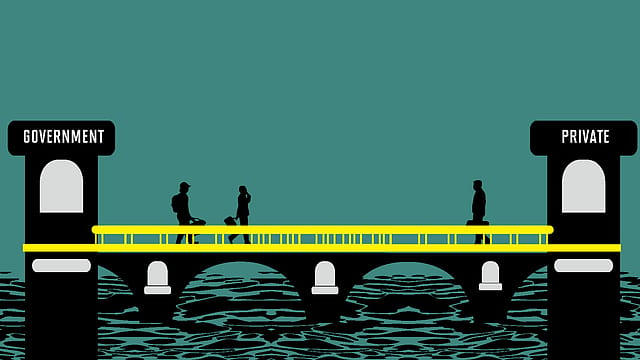The bureaucracy is now open
ADVERTISEMENT

For decades, the Indian bureaucracy has been used to implementing reforms by formulating laws, rules, and regulations. But, even after more than 70 years of independence, the bureaucracy has managed to avoid reforming itself. That, finally, appears to have changed.
Historic is an adjective bandied about quite loosely in the past four years. But late last week, in a truly historic reform, the central government invited applications for lateral recruitment or recruitment of professionals from the private sector to joint secretary-level posts in several key ministries.
Surprisingly, there wasn't the typical fanfare associated with Prime Minister Narendra Modi's policy decisions. But, being such a significant move, the announcement did not go completely unnoticed.
Economist Arvind Panagariya, a professor at Columbia University and former Niti Aayog vice-chairman, hailed the move on Twitter: “PM Narendra Modi announces another huge reform by exposing the top of the civil service to competition through lateral entry. Hope India’s best minds will rise to the occasion and come forward to serve. They are the key to the success of the reform.”
Joint secretaries are a crucial level of senior management. According to the government’s recruitment announcement, “They (joint secretaries) lead policymaking as well as implementation of various programmes and schemes of the department assigned to them. Joint secretaries report to the secretary/additional secretary in the ministry/department.”
What is particularly significant is that the hirings will be for key economic ministries and departments, indicating that this is not a reform just for the sake of doing reform. In all there are 10 positions on offer.
January 2026
Netflix, which has been in India for a decade, has successfully struck a balance between high-class premium content and pricing that attracts a range of customers. Find out how the U.S. streaming giant evolved in India, plus an exclusive interview with CEO Ted Sarandos. Also read about the Best Investments for 2026, and how rising growth and easing inflation will come in handy for finance minister Nirmala Sitharaman as she prepares Budget 2026.
Of these, three are at the Department of Revenue, Department of Financial Services and Department of Economic Affairs, respectively, all under the finance ministry. The Department of Commerce in the Ministry of Commerce and Industry will also be seeking a joint secretary as will the Ministry of Civil Aviation, Ministry of New & Renewable Energy, Ministry of Environment, Forests & Climate Change, Ministry of Shipping, Ministry of Road Transport & Highways and the Ministry of Agriculture.
To make sure that professional capacity carries more weight in the application than academic qualifications or marks, the eligibility of applicants in the advertisement has been left quite generic with a graduation degree as the minimum requirement.
And while state and central government officers working at a similar level will also be allowed to apply for the posts, individuals working in private sector companies, consultancy firms, international/multinational organisations with a minimum of 15 years of experience will also be allowed to apply. The tenure would be for three years.
Why would a private sector employee want to switch? Well, beyond the monetary compensation, the government has tried to pull at the patriotic heartstrings of the professionals, by stating that they want “talented and motivated Indian nationals willing to contribute towards nation building”. The government will pay between Rs 1,44,200 and Rs 2,18,200 per month to these professionals. They would also be paid all allowances and be given all facilities available to employees at an equivalent level in the Government of India. Applications will open on June 15 through a government portal and will remain open till July 30.
Lateral recruitment in India’s bureaucracy has been a longstanding demand from a large number of private sector professionals in the country. Now that the government has allowed them a way in, would we see professionals revolutionise Indian bureaucracy? Given time and persistence with lateral recruitment there certainly could be a revamp of the way the bureaucracy works. But it certainly will not be a quick revolution.
